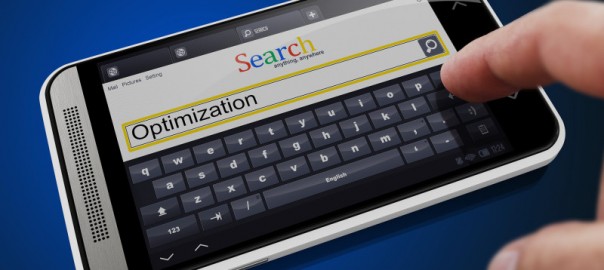As Google’s mobile update looms, columnist Mark Munroe believes it’s time to take a look at the drawbacks of disruptive interstitials.
The countdown to the Google mobile update is on. Now we have two days in April to give us agita — April 15 (of course) and April 21. I expect to see a burst in mobile search traffic on April 21 as Search Engine Optimization (SEO) professionals all over the world pull out their phones to run impromptu mobile queries to make sure their mobile sites still rank.
For those who haven’t been following the drama, the upcoming change Google is making will affect what people see on the search engine results pages. The search giant will demote sites that don’t provide a good mobile search experience and promote sites that do.
Many mobile Web implementations present users with an interstitial page instead of sending them to the intended piece of content. (An interstitial is an interim page dedicated to getting the user to do a specific action and is a common technique to promote app installs.) I’m sure you’ve seen them — you click to visit a mobile web page in your browser and are immediately prompted to download the company’s app and view the information there instead. Users typically find these pages quite annoying.
For many businesses, the strategic importance of promoting their app outweighs the impact of degrading the mobile user experience. Often, the lifetime value (LTV) of an app install far exceeds the negative conversion impact that the interstitial has on the individual visit.
However, with Google’s new focus on the mobile user experience, it may be time to reconsider the use of disruptive interstitials.
The Effect On UX
First, let’s take a look at what it does to the user experience.
Suppose you’re in the market to buy a home in San Francisco. You search on Google and are presented with a set of results that promise to take you to a page that shows all sorts of hot real estate listing. You click through, and this is where you end up:
Wow! Instead of ending up on your destination, you get a picture of an app, a huge button promoting the install, and a tiny link to click on to get to your desired destination.
The search experience that Google wants to provide is simple. Google delivers results to the search query; the sites that are listed in the results deliver the listed content. With a single click, users get what they want.
In this case, that search experience is destroyed.
It is true that install rates will go up with the interstitial, but what about the bounce? Don’t be deceived by bounce rate. An interstitial bounce is nothing at all like a normal bounce.
With a normal bounce, users land on the destination page. Perhaps they got the information they wanted. They had a chance to experience the brand and have their search satisfied.
Now consider the interstitial bounce. This is an ugly, ugly bounce! The user never gets to see anything. That visit is a 100% failed visit. They never get to experience your site or your brand. They very well may remember that next time they see your site in the SERP and avoid clicking.
Dissatisfied users will bounce right back to Google and continue to try to get their query solved. Google will certainly know that the first site didn’t provide an answer by the quick return to Google (sometimes called a “short-click”) and other behavior afterwards.
Regardless of the mobile-specific update that is looming, these are extreme negative signals to send to Google regarding a domain.
When analyzing the impact of interstitials on bounce rate, be aware that you will still get normal bounces. Only they won’t be recorded as bounces because they will be a 2-page visit. To analyze your true bounce rate with interstitials, you should consider the interstitial bounce rate to be purely incremental on your old bounce rate.
For example, if your bounce rate before implementing interstitials was 50% and after implementing them it jumps to 60%, your true bounce rate is 80%. (Only 20% of your users get to a second real page on your site.)
But I Want My M-Installs!
First thing, keep in mind that Google really only cares about visits from Google. For other channels (direct, SEM, email, social) provide interstitials as much as you want as long as you’re OK with the overall impact on your site visits.
As far as mobile SEO, there are options that still upsell your app without completely destroying the search user experience. Google recommends a simple banner that can promote the app download while you still use the rest of the page to deliver the page content.
For example, here is a page that does a great job of promoting the install but also delivering the expected result to the user. (Disclaimer: I used to work for Trulia).
While install rates might not be as high as a dedicated interstitial page, this is a great compromise. The install is promoted and the user search experience preserved.
What About April 21?
With the mobile update looming for April 21, what should you expect?
Based on comments that Google’s Gary Illyes made at SMX West, we know this update is focused on demoting sites that don’t provide a good user search experience.
The impact of frustrating users and sending overall negative signals about your domain to Google is reason enough to take a less aggressive approach. When you compound that with Google’s new focus on mobile user experience and the upcoming update, my recommendation is to follow Google’s guidelines and eliminate disruptive interstitials.
Some opinions expressed in this article may be those of a guest author and not necessarily Marketing Land. Staff authors are listed here.
(Some images used under license from Shutterstock.com.)
Marketing Land – Internet Marketing News, Strategies & Tips
(287)









